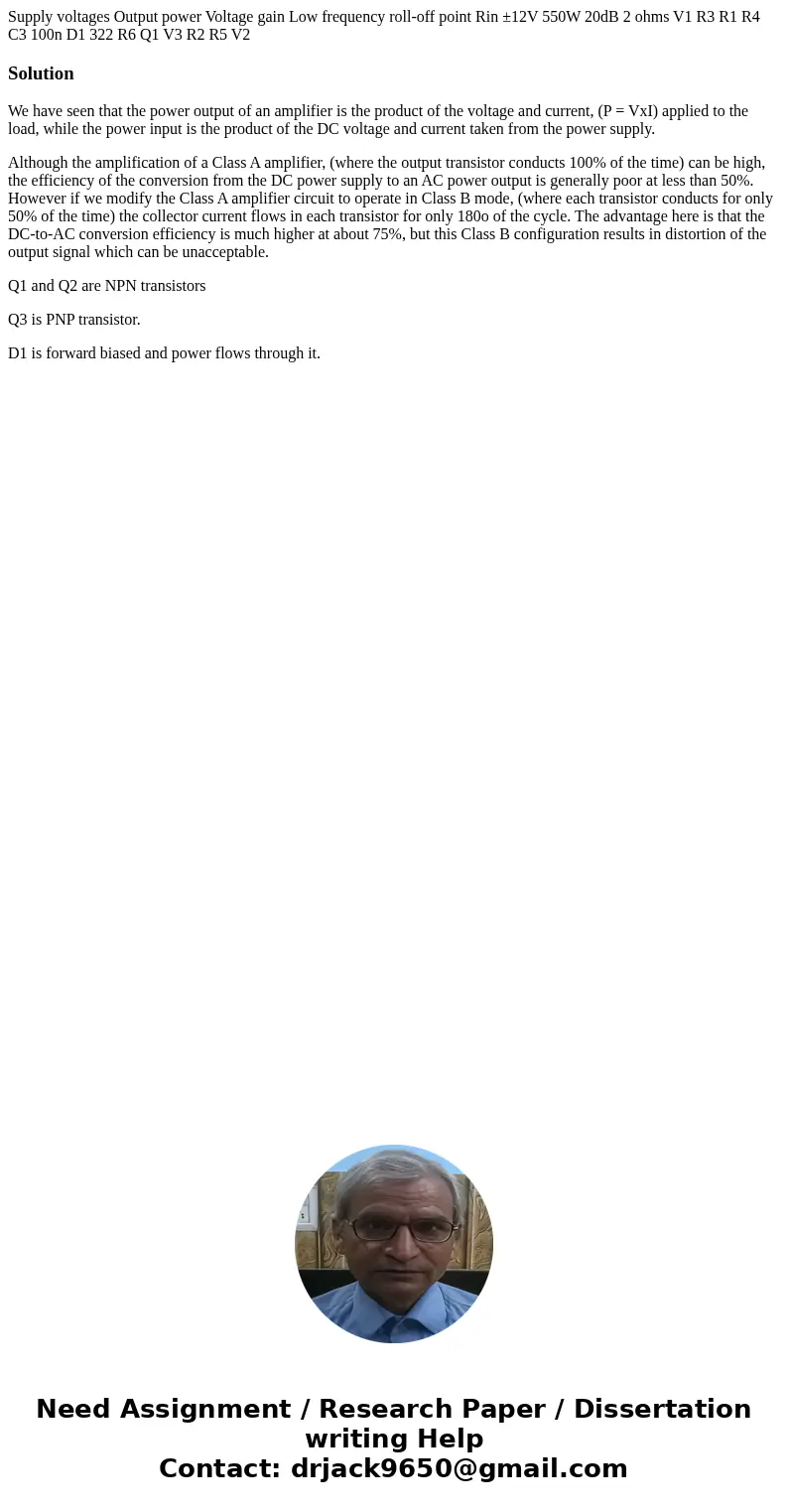Supply voltages Output power Voltage gain Low frequency roll
Solution
We have seen that the power output of an amplifier is the product of the voltage and current, (P = VxI) applied to the load, while the power input is the product of the DC voltage and current taken from the power supply.
Although the amplification of a Class A amplifier, (where the output transistor conducts 100% of the time) can be high, the efficiency of the conversion from the DC power supply to an AC power output is generally poor at less than 50%. However if we modify the Class A amplifier circuit to operate in Class B mode, (where each transistor conducts for only 50% of the time) the collector current flows in each transistor for only 180o of the cycle. The advantage here is that the DC-to-AC conversion efficiency is much higher at about 75%, but this Class B configuration results in distortion of the output signal which can be unacceptable.
Q1 and Q2 are NPN transistors
Q3 is PNP transistor.
D1 is forward biased and power flows through it.

 Homework Sourse
Homework Sourse